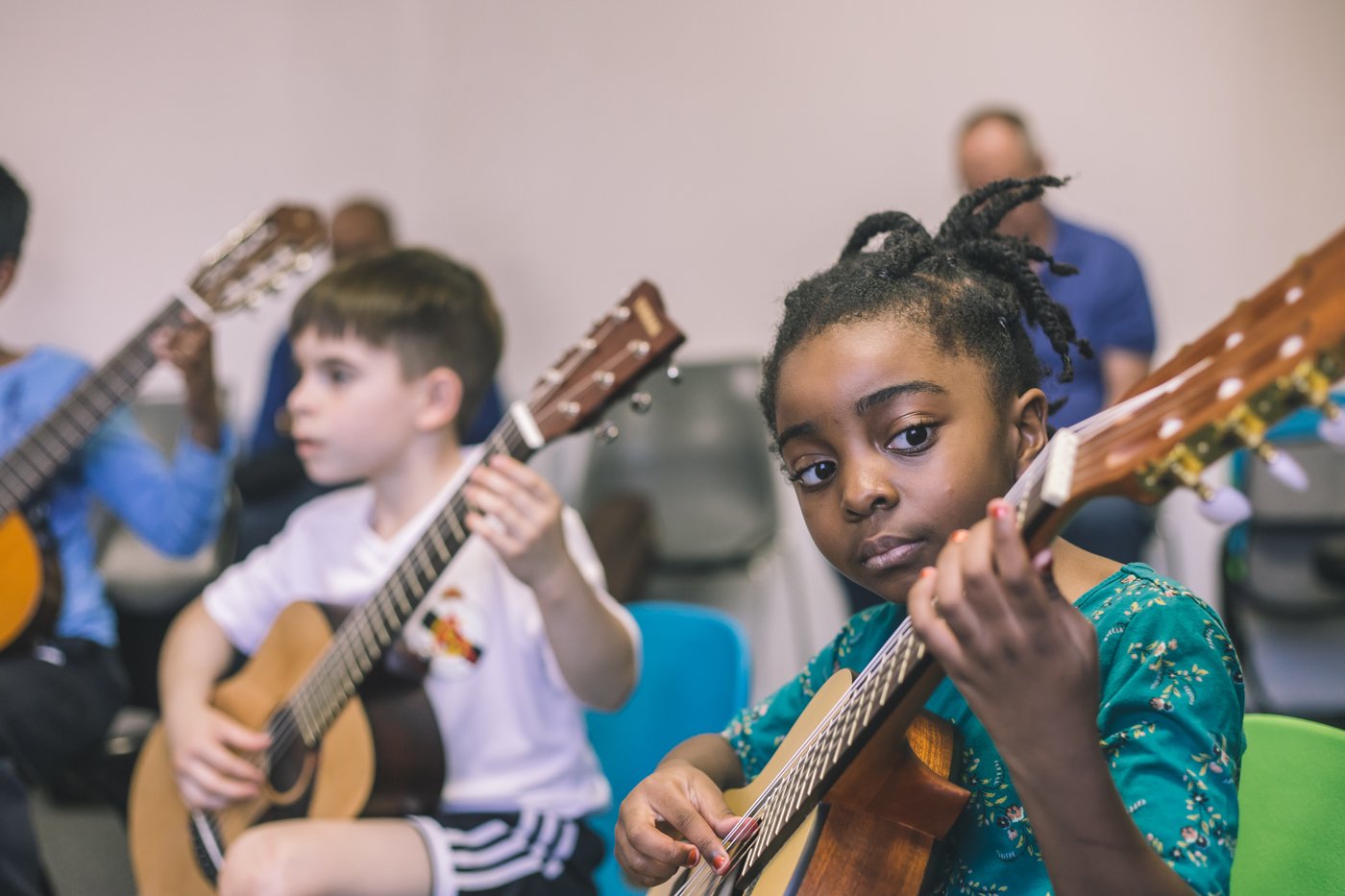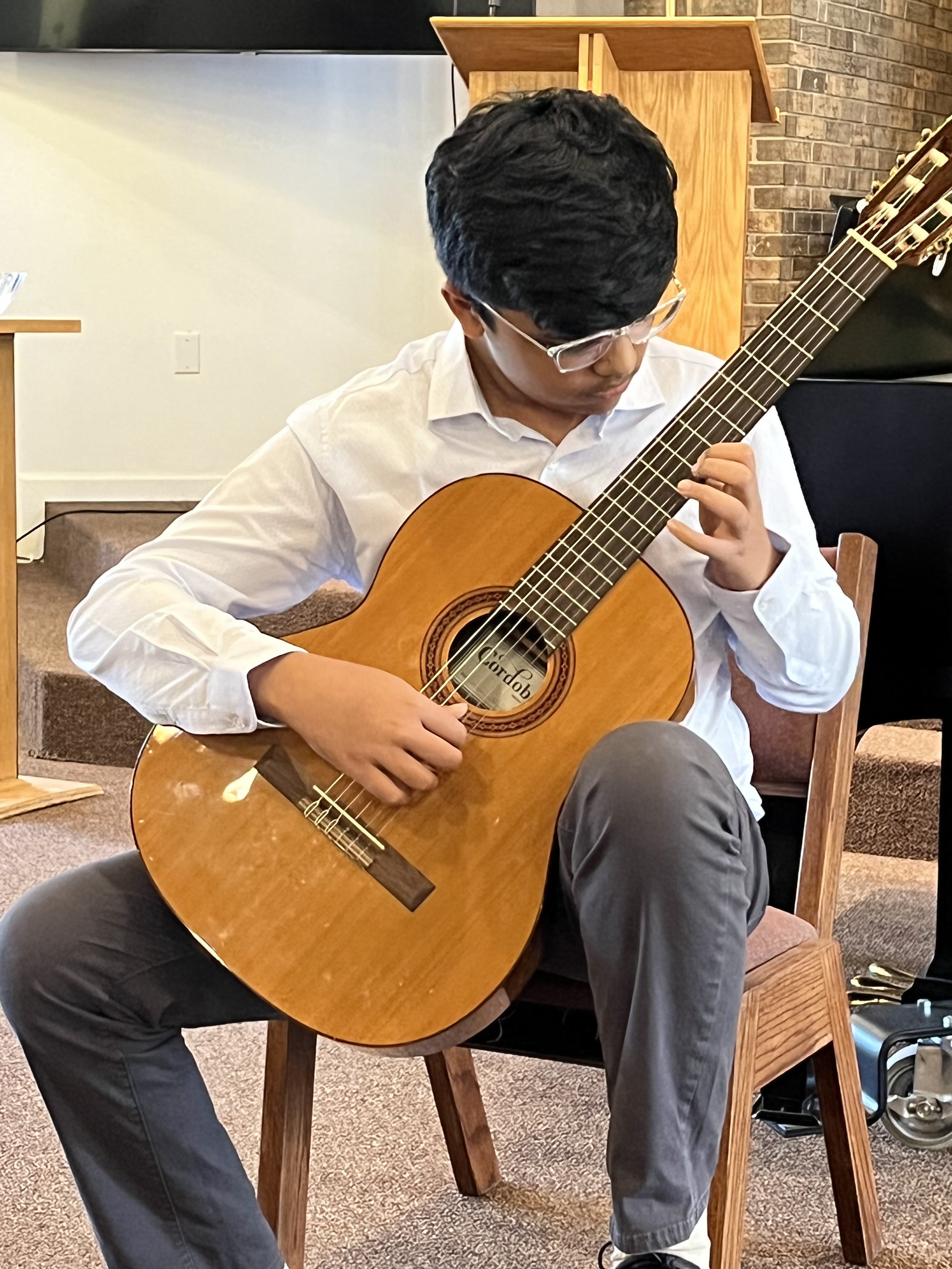
The Suzuki Method
Every Child Can Learn
In the mid-1900s, Shinichi Suzuki, a Japanese violinist, had a profound realization that all children worldwide learn their native languages relatively easily. Drawing from this insight, he worked to apply the principles of language acquisition to music education, a method that became known as his "mother-tongue approach." At the heart of the Suzuki method lie many core concepts, including parental involvement, nurturing encouragement, and repetition, all of which contribute to its effectiveness.

Beautiful Heart, Beautiful Tone
Suzuki Method Principles
Parent Involvement
Similar to how a child learns to speak, parents or caregivers, guardians, or grandparents actively participate in their child's musical education. They accompany their child to lessons and take on the role of "home teachers" for practice throughout the week. In many cases, one parent or caregiver will even learn to play the instrument before the child, understanding the expectations for the child's progress. They collaborate with the teacher to cultivate a nurturing and enjoyable learning environment, fostering the child's musical growth.
Early Beginning
Music education begins from birth as children listen to and absorb music from their environment, and it continues with formal instruction at ages 3-6. While an early beginning is best, it's never too late to embark on this musical journey!
Listening
Children learn new words by hearing them spoken hundreds of times by family and others around them. Similarly, making music-listening a part of their daily lives is critical; listening to pieces from the Suzuki repertoire is particularly important. This regular exposure helps the child to become familiar with the music, allowing them to learn it quickly.
Repetition
Repetition proves vital when learning to play an instrument. Young children repeat their first words and sounds many times, gradually adding more words. Once children learn a word, they integrate it into their vocabulary, using it in more sophisticated ways and different contexts as their language skills mature. Repetition and review work similarly in music; older pieces are used to refine previously-taught skills or are modified to introduce new concepts and challenges.
Encouragement
Like language learning, a child's endeavors to master an instrument should be met with genuine praise and encouragement. Each child learns at their own pace, a process involving many small steps, each celebrated when thoroughly mastered. Teachers and parents work together to keep the learning environment positive, supportive, and fun.
Learning with Other Children / Group Playing
Apart from private lessons, children also participate in group lessons and performances, creating additional opportunities for learning and motivation as they interact with one another. Group classes also teach ensemble skills such as leading and following, matching and blending sound, and keeping a steady pulse together.
Graded Repertoire
In learning to talk, children don't rely on practicing specific exercises; instead, they use language instinctively for communication and self-expression. Similarly, the pieces in the Suzuki repertoire are carefully designed to introduce technical challenges within the context of music itself, making the learning experience engaging and enjoyable.
Delayed Reading
Just as children first learn to talk before learning to read, children need to develop fundamental technical skills on their instruments before being introduced to reading music.
About Dr. Suzuki
Shinichi Suzuki, the developer of the Suzuki Method, was born in 1898 in Nagoya, Japan. As one of twelve children, he grew up near his father's violin factory but was unaware of the instrument's true potential until he heard a recording of Schubert's Ave Maria. This revelation led him to teach himself to play the violin, later receiving formal training in Tokyo and Germany. Driven by a deep love for children and a belief in their musical ability, Suzuki challenged conventional notions by proposing that children could learn music like they learn languages, starting at a young age and surrounded by music. His innovative method proved successful, producing young students who played music with remarkable proficiency and elegance, dispelling the notion of innate musical genius and showcasing the potential of every child to learn when taught with love and care. Through the years, Suzuki's teaching approach gained international recognition, inspiring teachers and parents worldwide to adopt the Suzuki Method and nurture thousands of children, fostering their musical talents, character, and capacity for compassion and harmony. Today, there are more than 9000 Suzuki instructors teaching a range of instruments and early childhood music classes to nearly a quarter of a million students worldwide.
“What is man’s ultimate direction in life? It is to look for love, truth, virtue, and beauty.”
– Dr. Shinichi Suzuki.










